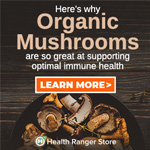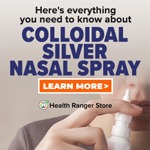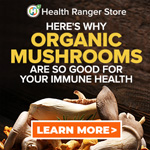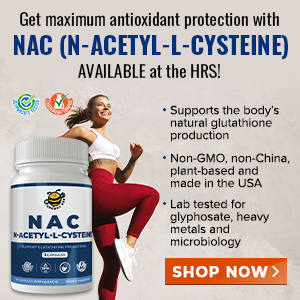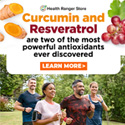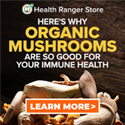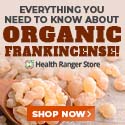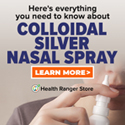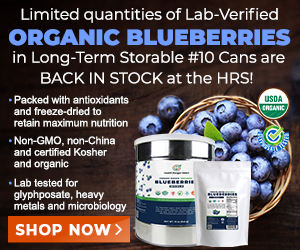
Nature wins the war on drugs: Low-cost, super-potent plants prevent addiction and treat withdrawal safely
Tuesday, October 01, 2013 by: Cody L
Tags: addiction treatment, plant medicine, war on drugs
- Newly released JFK files reveal Pentagon's role in creating Lyme disease and covid in the same lab
- The hidden dangers in your kitchen: How cooking methods impact diabetes, cancer and aging
- DEADLY DECEPTION: How COVID vaccines increased mortality rates and why authorities hid the truth
- CDC finally halts $11 billion COVID funding scam as health officials admit the ‘pandemic’ was a fraud
- Arkansas embraces medical freedom with landmark ivermectin law
- GAIN-OF-FUNCTION CAT-BIRD-FLU now on the rise as nearly a dozen cats in Colorado "test positive" for Bird Flu due to contaminated cat food
- Lab leak confirmed? Boris Johnson's stunning reversal on COVID origins sparks global debate
- Home gardening for preppers: A beginner's guide to growing your own food
- Trump's greatest betrayal so far: Accelerating Middle East wars, silencing dissent, and serving Zionist masters
- Why you should think twice before buying mainstream toothpaste formulas
- Cartels shift tactics: Kidnappings and organ trafficking surge as border crossings plummet under Trump policies
- Was JFK's assassination orchestrated by a CIA double agent? New evidence points to James Angleton as the “architect”
- ATTENTION PRESIDENT TRUMP: Please WITHDRAW your nomination of Dr. Susan Monarez for CDC Director as she is a VAX FANATIC and TOXIC JAB ZEALOT
- Here are TEN all-natural ways to protect your garden without using harmful chemicals
- Key nodes of Federal Government censorship
- Record honeybee deaths devastate U.S. agriculture, pesticides under scrutiny
- Speaker Johnson warns Congress may defund or disband rogue courts targeting Trump
- Paper or plastic? The environmental deception behind bag bans
- Newly released JFK files reveal Pentagon's role in creating Lyme disease and covid in the same lab
- Elon Musk: Aliens could be here on Earth RIGHT NOW
- Festive flavors: The sweet history, nutritional profile and health benefits of pecan pie
- Trump reverses course on Gaza plan, says “nobody is expelling Palestinians”
- Reclaim your health: How midlife exercise reverses years of inactivity
- Big Pharma's $8 Billion bribery scheme exposed: how doctors are pushed to prescribe junk science, not heal
- Boys are back in town: Trump’s patriotic alpha crew takes the wheel while toxic females ride in the backseat
- EPA advisor admits the agency is funneling billions to climate groups ahead of Trump’s return to White House
- Space war brewing? Russia threatens to destroy Starlink satellites
- Survival 101: Effective EMF blocking techniques
- A lack of integrity in Academia: Harvard professor found GUILTY of fraudulent research to promote CRT theory
- Mike Adams Sermon 66: God will DESTROY ISRAEL for its wickedness
- 5 Simple steps to boost your brainpower: How to strengthen executive function in a distracted world
- Rep. Nancy Mace introduces bill to ban biological males from female facilities on federal property
- Sugarcane extract superior to cholesterol-lowering drugs?
- WHO focusing more on policing speech about public health and implementing global surveillance systems
- Pilots report mysterious lights 'moving at extreme speeds' across Oregon skies
- Dr. Mike Yeadon releases 15-minute testimony - WATCH - about genocidal intent of COVID “vaccines”
- EPA advisor admits the agency is funneling billions to climate groups ahead of Trump’s return to White House
- The Health Ranger releases “Vaccine Zombie” song and music video, using AI-animated zombies for the music video
- California's social media censorship law struck down: A victory for free speech or a threat to online safety?
- Dr. Mike Yeadon releases 15-minute testimony - WATCH - about genocidal intent of COVID “vaccines”
- The pandemic as a tool for INDOCTRINATION: Understanding “The Indoctrinated Brain” by Dr. Michael Nehls
- Florida takes a stand: DeSantis proposes permanent ban on mRNA vaccine mandates
- Mike Adams releases country western hit single: Goin’ Back in Time is Comin’ Home
- Mike Adams releases music poetry sensation: A Child of God
- “Why we influenced the 2020 elections”: Facebook files reveal the coordinated effort to bury the Hunter Biden laptop story
- RFK Jr. clears key hurdle: Sen. Susan Collins backs controversial HHS nominee, signaling a new era for health policy
- Unpacking the Lies That We’ve Been Fed – new song and music video released by Mike Adams, the Health Ranger
- Mike Adams releases new song and music video: Nothing More Disgusting Than a Globalist
- Newly released JFK files reveal Pentagon's role in creating Lyme disease and covid in the same lab
- Congratulations to the FULLY UNVACCINATED as you resisted the COVID-19 PROPAGANDA MACHINE fueled by over $100 BILLION
- Michigan sheriff announces criminal investigation into 2020 election crimes, Dominion Voting Systems
- Israeli soldiers accused of even more torture and abuse in the West Bank
- Migrants are taking advantage of recent hurricanes to scam residents and loot their homes
- House Intelligence Committee calls for the ARREST and PROSECUTION of Dr. Anthony Fauci
- Red Cross issues warning to stop blood plasma donations from vaccinated people
- Scientists confirm: GENIUS brain function can be spontaneously unleashed in humans without any apparent cause
- EPA advisor admits the agency is funneling billions to climate groups ahead of Trump’s return to White House
- HYSSOP: What research reveals about the health benefits of this ancient holy herb
- Two containers with completed ballots fall out of truck in Florida
- Fully vaccinated about to see “tsunami” of illness and death, warns virologist
- Global leaders unite to clamp down on “misinformation” with UN-backed Cascais Declaration
- BREAKING: 2025 NDAA authorizes mandatory military draft of WOMEN across America… as Pentagon pursues global NUCLEAR war with both Russia and China at the same time
- Michael Yon warns of a ZIONIST TAKEOVER in Trump’s second administration
- BOMBSHELL: DNA testing kits are a SCAM to develop ethnic-specific bioweapons
- Ozempic and Wegovy weight loss drugs are injectable LIZARD VENOM PEPTIDES that may unleash a devastating wave of organ failure… side effects align with symptoms of SNAKE BITES
- Israeli soldiers accused of even more torture and abuse in the West Bank
- These 13 countries just signed an agreement to engineer a global FAMINE by destroying food supply
- NASA admits that climate change occurs because of changes in Earth’s solar orbit, and NOT because of SUVs and fossil fuels
- RFK Jr. clears key hurdle: Sen. Susan Collins backs controversial HHS nominee, signaling a new era for health policy
- Sermon 30: How Jesus reveals Caesar’s FAKE CURRENCY and FALSE AUTHORITY
- Coriander seeds: Ancient medicine backed by modern science
- Arizona officials claim Maricopa County needs 10-13 days to tabulate results of the election
Chinese herbs treat addiction to opioids, nicotine, and stimulants
Berberine, a component of the Chinese herb Coptis Chinensis root, as well as the American plants Oregon Grape root and barberry root, was shown to alleviate complex withdrawal symptoms of morphine and the depressive conditions associated with relapse. Berberine is highly recommended in replacement of methadone which has it's own addictive potential. Panax quinquefolius (wild ginseng) was also found to contribute to the same protective mechanisms against opioid withdrawal.Berberine also prevents nicotine from sensitizing the brain for addiction. It was also found that addition of berberine to cigarette filters completely prevented the sharp drop in oral peroxidase levels from cigarette consumption, halting the progression of oral cancer. Ginseng saponins, or saps, were found to inhibit the development of addiction to cocaine and block behavioral changes from high doses. Berberine from Coptis Chinensis likewise was proven in a Chinese lab in 2007 to completely prevent dopamine changes from cocaine administration. Berberine also prevents cigarette smoke induced lung injury.
Addiction and dependency do not take clinics and large scale spending to defeat
A mutation in a fatty acid amide hydrolase (FAAH) gene called 'C385A' was positively associated with incidences of extreme addiction, suggesting that endocannabinoid system dysregulation in a minority of individuals accounts for the particularly bad cases. These individuals may become addicted to cannabis, and for them it was found that palmitoylethanolamide (PEA) could reduce cravings entirely. It remains to be shown whether ginseng or coptis prevent cannabis dependency in addiction-prone or normal individuals.Upon morphine dependence, cannabinoid receptor 1(CB1R) is elevated, and injection of THC derived from Cannabis sativa significantly attenuated forepaw tremor, a standard laboratory index of opioid dependence, balancing the CB1R. Further, it was found that 2-AG, an endocannabinoid, given externally, also treated the withdrawal from dependency, suggesting it's internal synthesis and regulation is disturbed and not reaching the CB1R. It was also found that inhibiting FAAH and another endocannabinoid-degrading enzyme, MAGL, by raising anandamide and 2-AG, also entirely prevented susceptibility to cannabis dependence. FAAH inhibition with URB597 also prevented addiction to nicotine and alcohol.
Obesity has been found to be lower in cannabis users, and this is suggested to be from exposure to THC, indicating that it triggers direct weight loss. 22-25% of non-users were obese and 14% and 17% in cannabis users of more than three times per week, in a test sample combining two surveys for a total of 50,000 respondents. This could be effective for preventing nicotine-withdrawal associated weight gain. Transgenic mice overexpressing cannabinoid receptor 2 (CB2R) prevented cocaine self-administration and it's effects on dopamine signals in the nucleus accumbens and ventral tagmentum, which are the key regions in brain reward pathways.
Growth of new neurons in the hippocampus help us learn our way out of addiction and depression and can be triggered by ambient air concentrations of 'GRAS' plant saps
Importantly, it was found that cannabinoids are the only safe compound considered among Schedule 1 drugs of abuse. 'In summary, since adult hippocampal neurogenesis is suppressed following chronic administration of opiates, alcohol, nicotine, and cocaine, the present study suggests that cannabinoids are the only illicit drug that can promote adult hippocampal neurogenesis following chronic administration. Increased hippocampal neurogenesis appears to underlie the mechanism of anxiolytic- and antidepressant-like effects.' Cannabis sativa plant has an essential oil component which coordinates with it's cannabinoids for combined additive effects in a large number of conditions as stated in the paper 'Taming THC: potential cannabis synergy and phytocannabinoid-terpenoid entourage effects'. It states clearly the benefits of even being around the aroma of the plant.'This review will explore another echelon of phytotherapeutic agents, the cannabis terpenoids: limonene, myrcene, a-pinene, linalool, s-caryophyllene, caryophyllene oxide, nerolidol and phytol. Terpenoids share a precursor with phytocannabinoids, and are all flavour and fragrance components common to human diets that have been designated Generally Recognized as Safe by the US Food and Drug Administration and other regulatory agencies. Terpenoids are quite potent, and affect animal and even human behaviour when inhaled from ambient air at serum levels in the single digits ng/mL^-1. They display unique therapeutic effects that may contribute meaningfully to the entourage effects of cannabis-based medicinal extracts. Particular focus will be placed on phytocannabinoid-terpenoid interactions that could produce synergy with respect to treatment of pain, inflammation, depression, anxiety, addiction, epilepsy, cancer, fungal and bacterial infections (including methicillin-resistant Staphylococcus aureus).'
A new medical cannabis strain called 'Avidekel' has been cultivated in Israel which has tamed THC down to 0.1%, while raising cannabidiol (CBD) to 16.3%, as well as retaining the terpenoids. A video from Reuters contains an interview from the creators, Tikun Olam: http://www.youtube.com/watch?v=QoM8cQX1cj4. Prof. Yosef Sarne published Behavioural Brain Research and Experimental Brain Research that 'even extremely low doses of THC - around 1,000 to 10,000 times less than that in a conventional marijuana cigarette - administered over a wide window of of to a week before or one to three days after injury can "jumpstart" biochemical processes that protect brain cells and preserve cognitive function over time.'
Sources for this article include:
http://www.ncbi.nlm.nih.gov/pubmed/24068830http://www.frontiersin.org/Journal/10.3389/fpsyt.2013.00109/full
http://www.ncbi.nlm.nih.gov/pubmed/7872850
http://www.ncbi.nlm.nih.gov/pubmed/23269899
http://www.ncbi.nlm.nih.gov/pubmed/22031036
http://www.ncbi.nlm.nih.gov/pubmed/18053328
http://www.ncbi.nlm.nih.gov/pubmed/18310906
http://www.ncbi.nlm.nih.gov/pubmed/18955248
http://www.ncbi.nlm.nih.gov/pubmed/22397836
http://www.ncbi.nlm.nih.gov/pubmed/12543253
http://www.ncbi.nlm.nih.gov/pubmed/21937688
http://www.ncbi.nlm.nih.gov/pubmed/23896215
http://www.ncbi.nlm.nih.gov/pubmed/11478928
http://www.ncbi.nlm.nih.gov/pubmed/18691603
http://www.ncbi.nlm.nih.gov/pubmed/23911834
http://www.ncbi.nlm.nih.gov/pubmed/23624062
http://www.ncbi.nlm.nih.gov/pubmed/23605560
http://www.ncbi.nlm.nih.gov/pubmed/23410498
http://www.ncbi.nlm.nih.gov/pubmed/23333350
http://www.ncbi.nlm.nih.gov/pubmed/23248274
http://www.ncbi.nlm.nih.gov/pubmed/22414816
http://aje.oxfordjournals.org/content/174/8/929.long
http://www.ncbi.nlm.nih.gov/pmc/articles/PMC1253627/
http://www.ncbi.nlm.nih.gov/pmc/articles/PMC3165946/
http://www.tikun-olam.info/#!home/cuar
http://www.vosizneias.com
About the author:
Cody Lakeland is a freelance writer in fields such as nutrition, phytomedicine, neurology, gerontology, epigenetics, and toxicology. He currently helps to coordinate the formulas for a internet/home-based community business specializing in customized alternative therapies.
Addiction treatment at FETCH.news
Get independent news alerts on natural cures, food lab tests, cannabis medicine, science, robotics, drones, privacy and more.
Take Action: Support Natural News by linking to this article from your website
Permalink to this article:
Embed article link: (copy HTML code below):
Reprinting this article:
Non-commercial use OK, cite NaturalNews.com with clickable link.
Follow Natural News on Facebook, Twitter, Google Plus, and Pinterest
Science News & Studies
Medicine News and Information
Food News & Studies
Health News & Studies
Herbs News & Information
Pollution News & Studies
Cancer News & Studies
Climate News & Studies
Survival News & Information
Gear News & Information
News covering technology, stocks, hackers, and more



"Big Tech and mainstream media are constantly trying to silence the independent voices that dare to bring you the truth about toxic food ingredients, dangerous medications and the failed, fraudulent science of the profit-driven medical establishment.
Email is one of the best ways to make sure you stay informed, without the censorship of the tech giants (Google, Apple, Facebook, Twitter, YouTube, etc.). Stay informed and you'll even likely learn information that may help save your own life."
–The Health Ranger, Mike Adams















